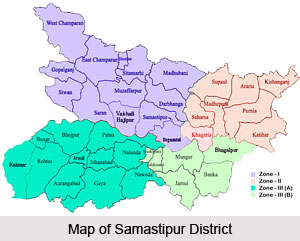History of Samastipur district dates back to the period around 1325-1525 AD, when it was a portion of the district of Darbhanga, Bihar. The Sugauna Dynasty, which was also referred to as the Oinwara dynasty or the Kameshwara Thakur dynasty used to rule Darbhanga. The Muslim conquerors, who, by this time had defeated the armies of Mithila, did not interfere with the political powers of the Hindu Chiefs. The Oinwara Dynasty patronised fine arts and learning. Their palaces became centres which promoted the study of Sanskrit philosophy and letters. Amiykara, Amartakara, Gadadhara, Vidyapati, Vachaspati Mishra and Sankara were a few of the reputed Sanskrit scholars during that age.

The founder of the Oinwara Dynasty, namely Kameshwara used to reside in Oini village which is located near Pusa Road in Darbhanga. When the region of Torhut was divided into two separate parts by Bengal`s Hazi Ilyas, the king of Oinwar dynasty moved his capital to Sugauna, a place which is near Madhubani. The northern part of Darbhanga district was controlled by Oinwaras while the southern regions of this district were ruled by Hazi Ilyas. Samastipur, which was initially known as Shamsuddinpur was actually founded by Hazi Shamsuddin Ilyas. Historical records claim that Samastipur became a separate district in the year 1972 after it was split from Darbhanga district.
This article is a stub. You can enrich by adding more information to it. Send your Write Up to [email protected]



















